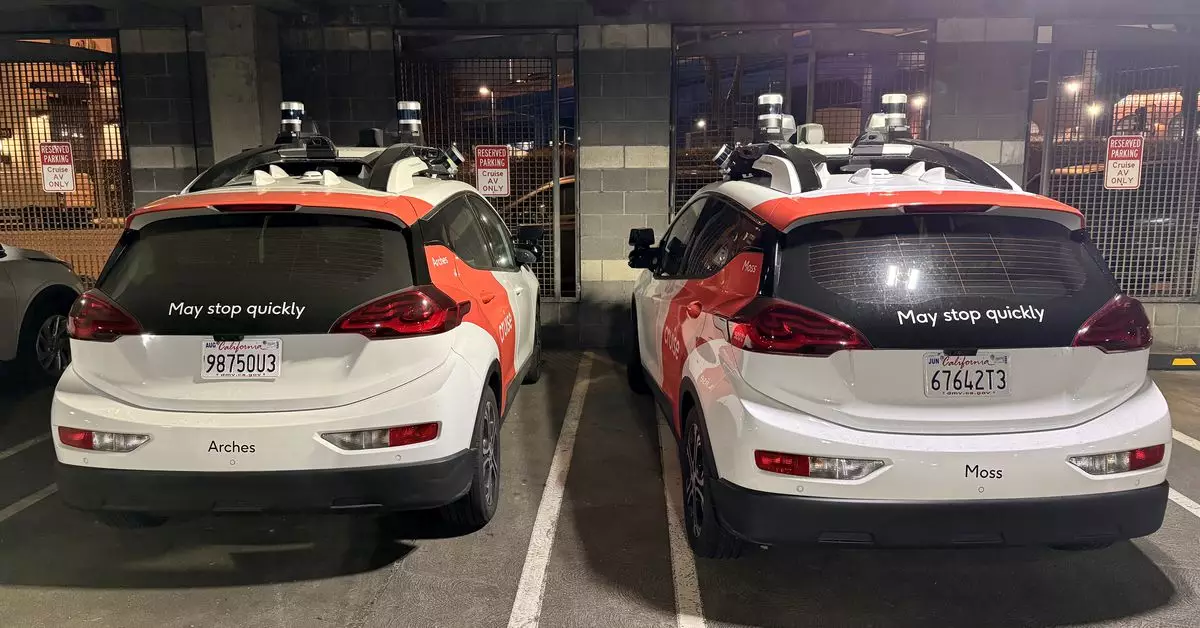Cruise, the self-driving car subsidiary of General Motors (GM), finds itself at a crossroads as it faces significant financial challenges despite being grounded since late October 2023. This decision to pause operations followed a severe incident involving one of its driverless vehicles, which struck and seriously injured a pedestrian in San Francisco. According to GM’s recent report, Cruise incurred a loss of $435 million in the third quarter of 2024, a notable improvement from $791 million during the same period in 2023. However, this semblance of progress comes against the backdrop of an astounding total loss of $3.48 billion over 2023, stirring skepticism regarding the long-term viability of Cruise’s business model in an industry that has yet to deliver on the promise of robotic taxis.
Following its hiatus, Cruise is eyeing a cautious return to the market, having conducted limited operations with test vehicles in Arizona and Texas. Additionally, the company has broached plans to introduce manually driven vehicles in the Bay Area later this year. Nevertheless, it remains unclear when it will resume its paid commercial services, raising doubts about the renewal of consumer trust and market stability.
This operational hesitance highlights broader industry challenges that Cruise faces. Many automakers are reevaluating their investments in autonomous technology, recalling the significant financial drain that comes without a transparent route to profitability. While GM CEO Mary Barra has shown unwavering support for Cruise’s mission, she is also cognizant of the increasing pressures from stakeholders to reassess such investments. Undeniably, Cruise’s current predicament serves as a sobering reminder of how complex the path to autonomy can be.
Barra’s commitment to Cruise is underscored by notable organizational changes made over the past year. In a bold move, she ousted the company’s founders in favor of leaders with experience in both automotive and tech sectors. This restructuring aims to drive a more disciplined approach to investment and operations amidst growing losses. Furthermore, Cruise laid off approximately 25% of its workforce and abandoned its ambitious Origin project—an autonomous shuttle devoid of traditional controls—resulting in a staggering $534 million loss.
Investors are apprehensive about Cruise’s future, especially given the substantial cash drain it poses on GM’s overall portfolio. While Barra optimistically suggests that Cruise will limit its losses to $2 billion in 2025, skepticism remains regarding the company’s recovery strategy. The contrast between GM’s aspirations and the current reality of Cruise’s operations raises critical questions about whether the organization can pivot effectively toward a sustainable business model.
Despite the perceived challenges, there are indications that Cruise is considering a new funding model to share the financial burden of operating its fleet of autonomous vehicles. Some analysts speculate that the inclusion of external partners could provide the necessary financial cushion, lessening the impact on GM’s balance sheet. However, such collaborations would require a refined strategy to ensure both compatibility and profitability.
The broader autonomous vehicle market is equally fraught with uncertainty. Companies like Waymo, which has the full backing of Alphabet, are also grappling with profitability. The lack of a successful financial framework for automated driving services raises concerns about whether Cruise can truly break through and begin turning profits. As the race for autonomy continues, the harsh reality remains: developing driverless technology is costly, and effective monetization is yet to be established.
The road ahead for Cruise is paved with obstacles that are both economic and operational in nature. While there are positive signs of financial improvement in the short term, the company is still trapped in a significant loss cycle with no clear sign of how to ensure sustainable profitability. As GM retains faith in its ambitious goals for autonomous travel, it will be imperative for the company to navigate the complex landscape of operational challenges, investor expectations, and competition with renewed vigor. The journey of Cruise serves as a microcosm for the entire autonomous vehicle industry, confronting the reality that the future of transportation may demand more time, resources, and creativity than initially anticipated.

